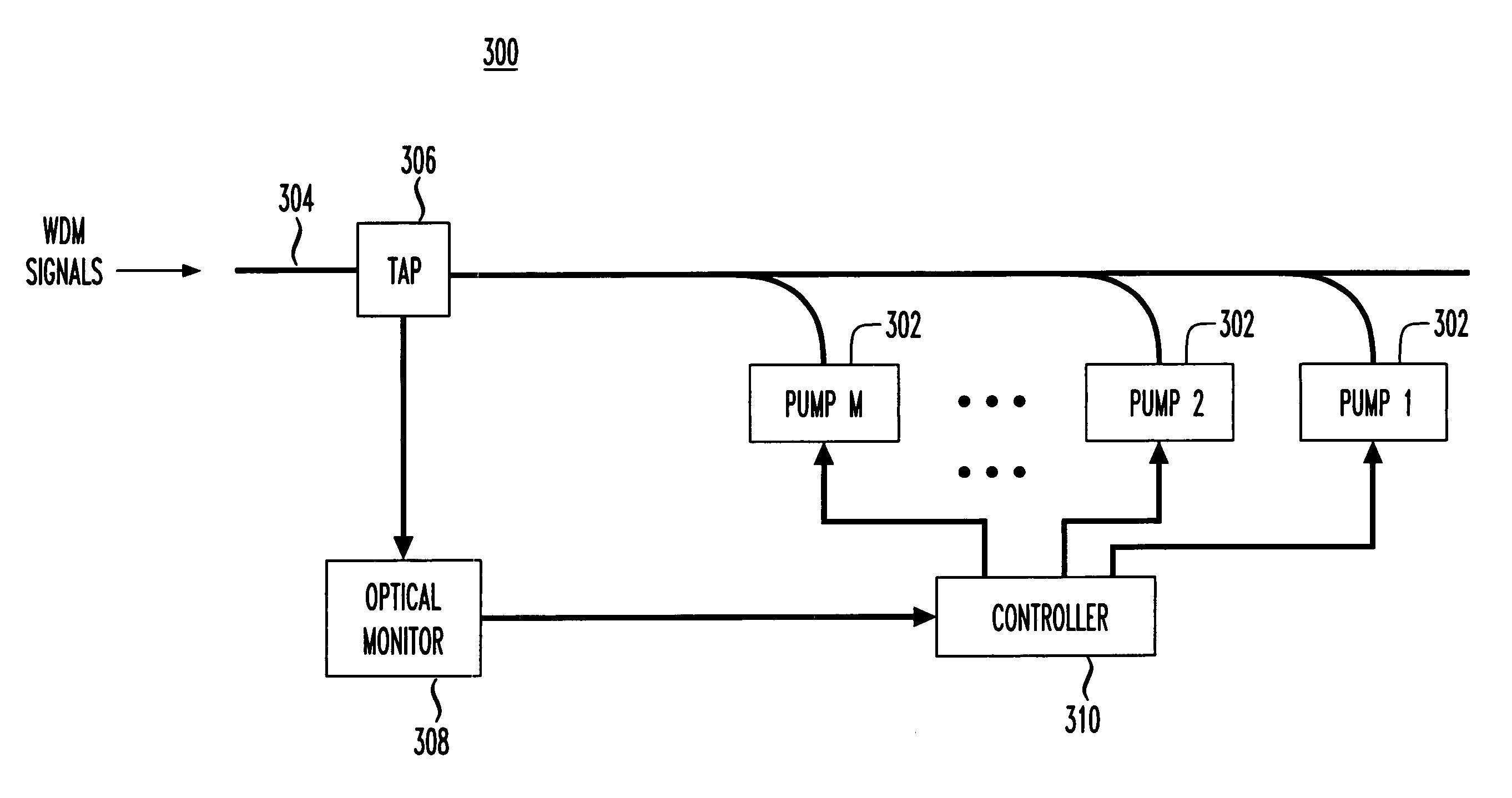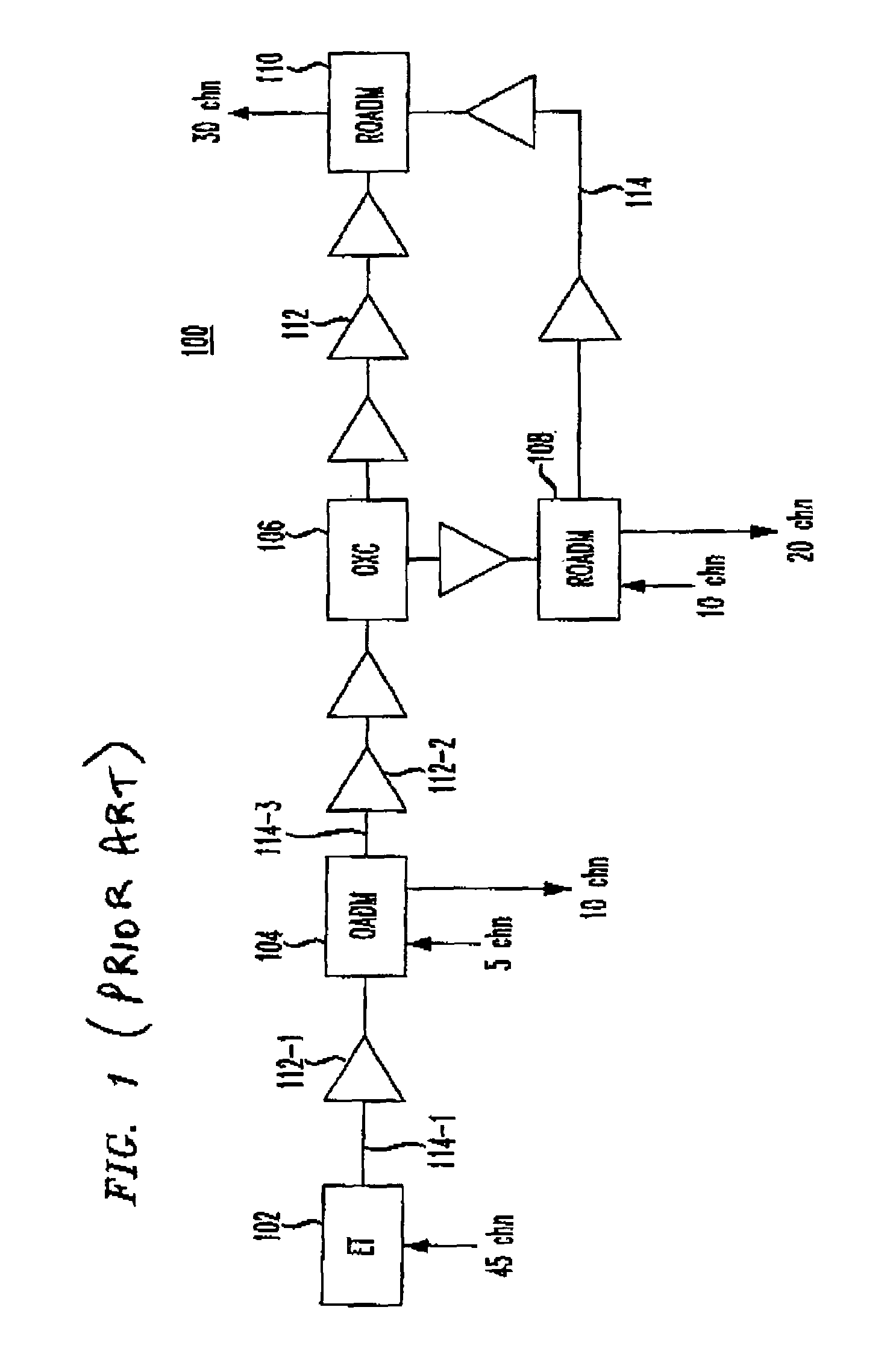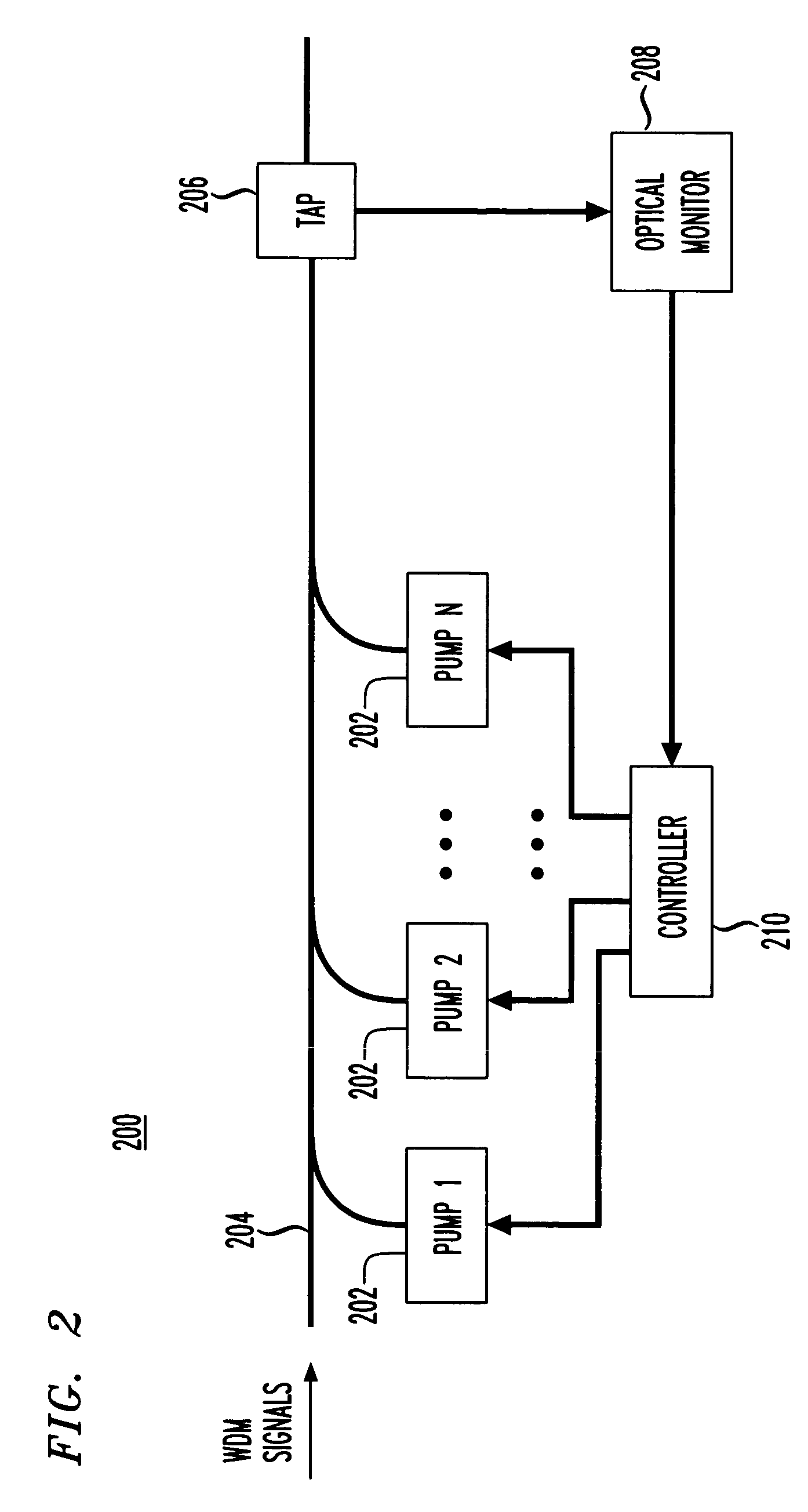Transient control in optical transmission systems
a transmission system and transient control technology, applied in the field of optical transmission systems, can solve the problems of unacceptably large channel-dependent gain errors and undetected large errors in individual channel gains, and achieve the effects of reducing the transient-induced performance degradation experienced by the surviving channels, good system design, and optimizing performan
- Summary
- Abstract
- Description
- Claims
- Application Information
AI Technical Summary
Benefits of technology
Problems solved by technology
Method used
Image
Examples
Embodiment Construction
Transient Control
[0022]FIG. 1 shows a block diagram of a portion of an exemplary optical communications system 100 used to illustrate some of the different types of elements for which transient control may be implemented. In particular, FIG. 1 shows a portion of system 100 having five different types of elements (i.e., end terminal (ET) 102, optical add / drop multiplexer (OADM) 104, optical cross-connect (OXC) 106, reconfigurable OADMs (ROADMs) 108 and 110, and eight repeaters 112) interconnected by 14 optical fibers 114.
[0023]In general, an end terminal can add and drop WDM channels, while an OADM can add / drop channels will passing through other channels. An OXC can switch channels to different paths. In addition to being able to add / drop channels, a ROADM can also switch channels to different paths. ROADMs are typically more flexible that OADMs in that ROADMs may be able to add / drop (or pass through) any channel, while OADMs may be able to add / drop only a limited set of channels. I...
PUM
 Login to View More
Login to View More Abstract
Description
Claims
Application Information
 Login to View More
Login to View More - R&D
- Intellectual Property
- Life Sciences
- Materials
- Tech Scout
- Unparalleled Data Quality
- Higher Quality Content
- 60% Fewer Hallucinations
Browse by: Latest US Patents, China's latest patents, Technical Efficacy Thesaurus, Application Domain, Technology Topic, Popular Technical Reports.
© 2025 PatSnap. All rights reserved.Legal|Privacy policy|Modern Slavery Act Transparency Statement|Sitemap|About US| Contact US: help@patsnap.com



